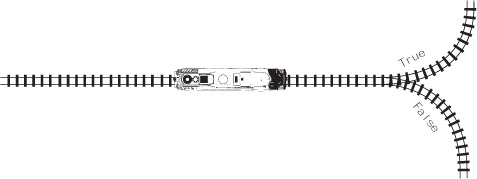Chapter 7. Decisions, Decisions
In the first few chapters, we saw some of the basic building blocks of a program. We can now make a program with input, processing, and output. We can even make our input and output a little fancier by using a GUI. We can assign the input to a variable, so we can use it later, and we can use some math to process it. Now we’re going to start looking at ways to control what the program does.
If a program did the same thing every time, it would be a little boring and not very useful. Programs need to be able to make decisions on what to do. We’re going to add some different decision-making techniques to our processing repertoire.
Programs need to be able to do different things based on their input. Here are a few examples:
- If Tim got the right answer, add 10 points to his score.
- If Jane hit the alien, make an explosion sound.
- If the file isn’t there, display an error message.
To make decisions, programs check (do a test) to see if a certain condition is true or not. In the first example above, the condition is “got the right answer.”
Python has only a few ways to test something, and there are only two possible answers for each test: true or false.

- Are two things equal?
- Is one thing less than another?
- Is one thing greater than another?